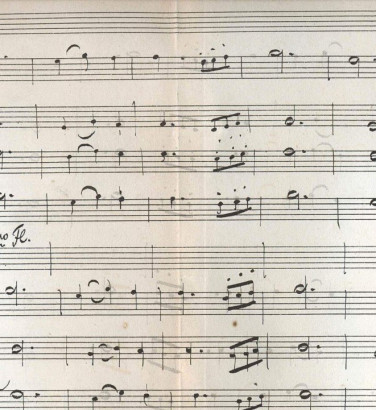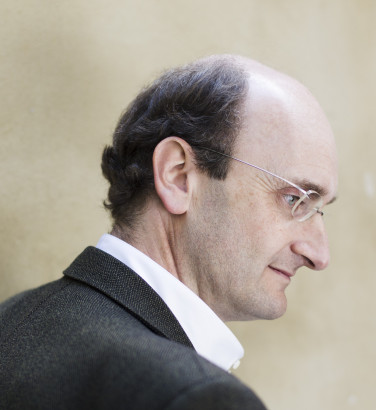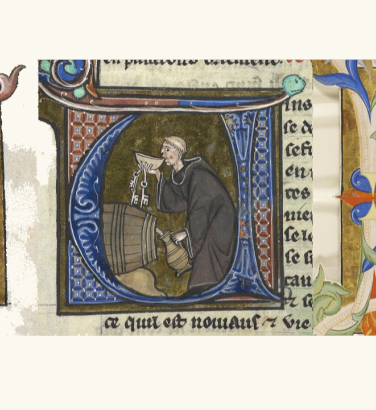
The Prix de Rome: a double-edged sword
8 Jan 2024
News Story
Portraits of three young French composers at the time they entered the Prix de Rome, from left to right: Hector Berlioz (around 1840), Claude Debussy (1884) and Maurice Ravel (1906)
For many years the most prestigious of French composition prizes, the Prix de Rome has a much longer (and broader) history than is generally thought. Set up in 1663 to recognise the talents of painters and sculptors only, it came to encompass three more artforms by 1804: architecture, musical composition and engraving. Its significance dwindled during the 20th century, though it was not until 1968 (amid the cultural reforms which followed the riots that May) that the prize was abolished.
Not that the Prix de Rome had been immune from scandal before this. Any competition relating to the arts is bound to have its validity and purpose questioned, and this certainly happened over the course of the prize’s 300-year existence. Just as the Academy Awards (for instance) failed to recognise the likes of Hitchcock, so the Prix de Rome overlooked Delacroix, Manet and Degas among the painters, and most notoriously among the composers, Ravel. When he was eliminated for the fifth time in 1905, this caused such a scandal that the French government forced the Paris Conservatoire (many of whose faculty sat on the Prix de Rome jury) into a radical overhaul of its management.
Nearly seventy years prior to this, Berlioz had entered the competition a total of four times before winning first prize in 1830. The competition ran along well-established lines: the choral fugue required for the first round determined which four entrants would be selected to compose a solo cantata on that year’s prescribed text, generally on a historical or mythological subject. A maximum of five prizes could be awarded per category, with a top prize of a year’s study in Rome and a five-year pension.

The Villa Medici in Rome, home of the Prix de Rome winners from 1803 (albumen print from glass negative, 1848-52)
Following what sounds like a thoroughly academic first round, the chosen few had freer rein to demonstrate their musical personalities in the second. To say that Berlioz’ fortunes were variable here would be putting it mildly: La mort d’Orphée (The Death of Orpheus, 1827) was deemed “unplayable” while Herminie (Erminia, 1828 – best known for providing the main theme of Symphonie fantastique two years later) won second prize.
According to convention, this should have all but guaranteed Berlioz first prize the following year, but La mort deCléopâtre (The Death of Cleopatra, performed by the SCO in January 2024) proved too avant-garde for the jury’s tastes: Berlioz went home empty-handed and, possibly adding insult to injury, there was no first prize awarded that year. He therefore curtailed his progressive tendencies the following year, and if Sardanapale (Sardanapalus) proved a success as far as winning the Prix de Rome was concerned, Berlioz himself was far from convinced. It didn’t help that he regarded the premiere as an utter failure, but after a final performance in 1833, he destroyed all but a fragment of the score.
With the benefit of hindsight, this was perhaps predictable. In 1829, he had confided to his sister that the only value of “this damned competition” was to prove to their father (a doctor) that his future lay in music rather than medicine. Despite finally succeeding, Berlioz' career took off with the premiere of his Symphonie fantastique in late 1830, as a result of which he took against the idea of studying in Rome altogether, and tried to get out of this commitment. Looking back on this enforced stay in the Italian capital, he was highly critical of the few pieces he wrote there.
[The Prix de Rome] was a certificate, a title, independence, almost a life of ease for five years.
Berlioz’s experience would suggest that the prize may have been of limited value to more subversive composers, less likely to espouse the conservative values of the Paris Conservatoire. The Prix de Rome’s true heyday was to come later that century, but even among the winners whose names remain familiar to this day (such as Gounod, Bizet, Massenet and Dukas), only Debussy can truly be regarded as revolutionary. The fact his winning entry is rarely performed today may be taken as an indication of its relative quality, L’enfant prodigue (The Prodigal Son, 1884) being deliberately written in a more derivative style than the personal idiom he had already adopted. Like Berlioz before him, Debussy struggled to compose much of significance while in Rome. Two decades on, perhaps Ravel had a lucky escape.
Among later composers recognised by the Prix de Rome, only a small number still stand out: Lili Boulanger (the first female winner) in 1913, Henri Dutilleux in 1938 and Georges Delerue in the late 1940s. This last name may not be familiar to classical audiences, but cinefiles will very likely have heard his music: he wrote the soundtrack to over 300 films, including many of François Truffaut’s and classics from The Day of the Jackal to Steel Magnolias.
Despite its shortcomings, some degree of value to the Prix de Rome has to be acknowledged in its adoption by other countries (including the UK via the British School at Rome, established in 1901). The French government even revived the prize in 2014: reimagined as a means for a major French personality (representing the humanities, arts or sciences) to act as mentor to young artists, this has predictably resulted in a new range of criticisms of the format. Plus ça change …
Related Stories
![]()
Unfinished symphonies
15 December 2025
Your starter for ten: besides Schubert, who has an unfinished symphony to their name?![]()
Andrew Manze: "I've always loved Viennese waltzes and polkas"
1 December 2025
Our Principal Guest Conductor is really looking forward to conducting our Viennese New Year concerts!![]()
The medieval carol
24 November 2025
For this year's Christmas article, we look back at some very early festive carols ...


